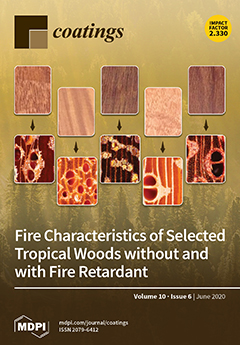Tungsten oxide (WO
3) is widely used as a functional material for “smart windows” due to its excellent electrochromic properties, however it is difficult to overcome the conflict between its optical modulation and cyclic stability. In this work, WO
3 thin films
[...] Read more.
Tungsten oxide (WO
3) is widely used as a functional material for “smart windows” due to its excellent electrochromic properties, however it is difficult to overcome the conflict between its optical modulation and cyclic stability. In this work, WO
3 thin films with different crystal structures were prepared by DC reactive magnetron sputtering method. The effects of substrate temperature on the structure, composition, and electrochromic properties of WO
3 films were investigated. The results show that the crystallinity of the WO
3 film increases with increasing deposition temperature, indicating that temperature plays an important role in controlling the structure of the WO
3 film. For WO
3 thin films formed at a substrate temperature of 573 K, the film is in an amorphous state to a crystalline transition state. From X-ray diffraction (XRD) analysis, the thin film showed a weak WO
3 crystallization peak, which was in the composite structure of amorphous and nanocrystalline. Which has the best electrochromic properties, with modulation amplitude of 73.1% and bleached state with a coloration efficiency of 42.9 cm
2/C at a wavelength of 550 nm. Even after 1500 cycles, the optical modulation still contains 65.4%, delivering the best cyclic stability.
Full article





